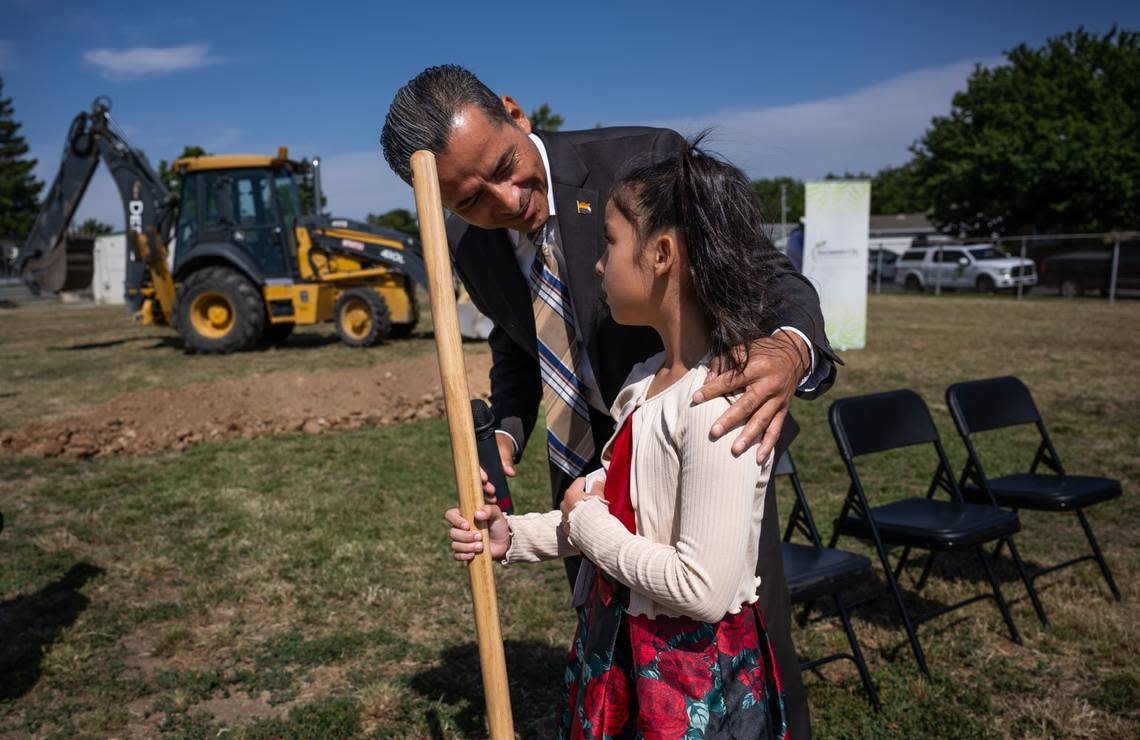Sacramento school district adding bond measure on November ballot. Will your taxes go up?

School districts across the state are in major need of funds to address aging infrastructure. Sacramento City Unified School District is no different — even with the passage of a $750 million bond in 2020, the district estimates that it needs $4.4 billion to modernize and rebuild facilities to meet the needs of students.
Earlier this month, the Sacramento City Unified Board of Trustees voted to place a new bond measure on November’s ballot to the tune of $543 million. District administrators say that approval of the bond measure would not change the amount property owners see on their tax bill.
“This ballot measure would not increase taxes for our communities, rather this is an ask for voters to continue paying the same tax rates as they currently are to continue supporting our capital needs,” the district’s Chief Business and Operations Officer Janea Marking said at a May 2 board meeting.
How does that work?
First, what is a bond measure?
Education bonds are voter-approved funds that are exclusively used for school facilities. Districts issue bonds and collect money to pay back the loan by taxing property owners on the assessed value of their properties. As a rule, bond monies can only be used for facilities, not on personnel or academic programs.
Sacramento City Unified has successfully passed five bond measures in the last 25 years, totaling over $1.5 billion. If you own a home within district boundaries, you might see multiple bond-related lines on your tax bills. This is because bonds are paid off over decades — the district is still paying off multiple bonds dating back to Measure E from 1999.
In 2024, a property owner will pay a rate of around $130 per $100,000 of assessed property value, but this number will decrease as past bonds are paid off. For example, tax rate projections estimate that both the Measure E and Measure I (2002) bonds will be paid off by 2034, which would put that year’s tax rate at about $80 per $100,000 assessed value.
But issuing a new bond would keep the taxation rate at a consistent level through 2031 and would then drop off incrementally every decade or so unless other bonds are passed. However, the district is likely to continue to issue bonds until its facility needs are met. Dale Scott, the district’s financial advisor, projected that the tax rate of $130 could remain consistent through the next several decades if voters authorize another bond in 2028 at $315 million. This plan would raise about $1.6 billion within one decade.
“You have the opportunity to come up with over a billion dollars of funding in the next decade, to have it come in at a reasonable pace, or perhaps an aggressively reasonable pace, and to do it in a way that will not increase taxes on your current taxpayers,” Scott told the board.
A 55% majority vote is required for the 2024 bond measure to pass. The last bond, Measure H, passed at 62.4% and polling indicates that local support for a bond is still there, but that it may not be a landslide.
It will cost Sacramento City Unified an estimated $442,000-$457,000 to place the measure on the ballot according to the Sacramento County Elections Office.
What kind of construction projects will this support?
Huge pots of money require comprehensive plans to manage. Sacramento City Unified maintains a Facilities Master Plan which has separated projects into two categories: projects that will address health, safety and compliance issues and projects that improve learning environments. Projects in the second category are prioritized to address the needs of schools identified as under-resourced and historically marginalized.
New bond funds would fund a broad range of projects on district campuses. The draft ballot text lists two elementary school rebuilds, several campus renewals, upgrades to high school performance art centers, a new competition pool at McClatchy High School and technology and infrastructural upgrades across the district. A full list of potential projects will be included in the full ballot text to voters.
Projects funded by 2020’s Measure H include the reconstruction of three school campuses which all broke ground last year. The campuses were specifically chosen based on high segregation and poverty indicators as identified by the plan. A number of other bond-funded projects, like elementary campus renewals and the replacement of high school athletic fields, are slated for work this summer.

